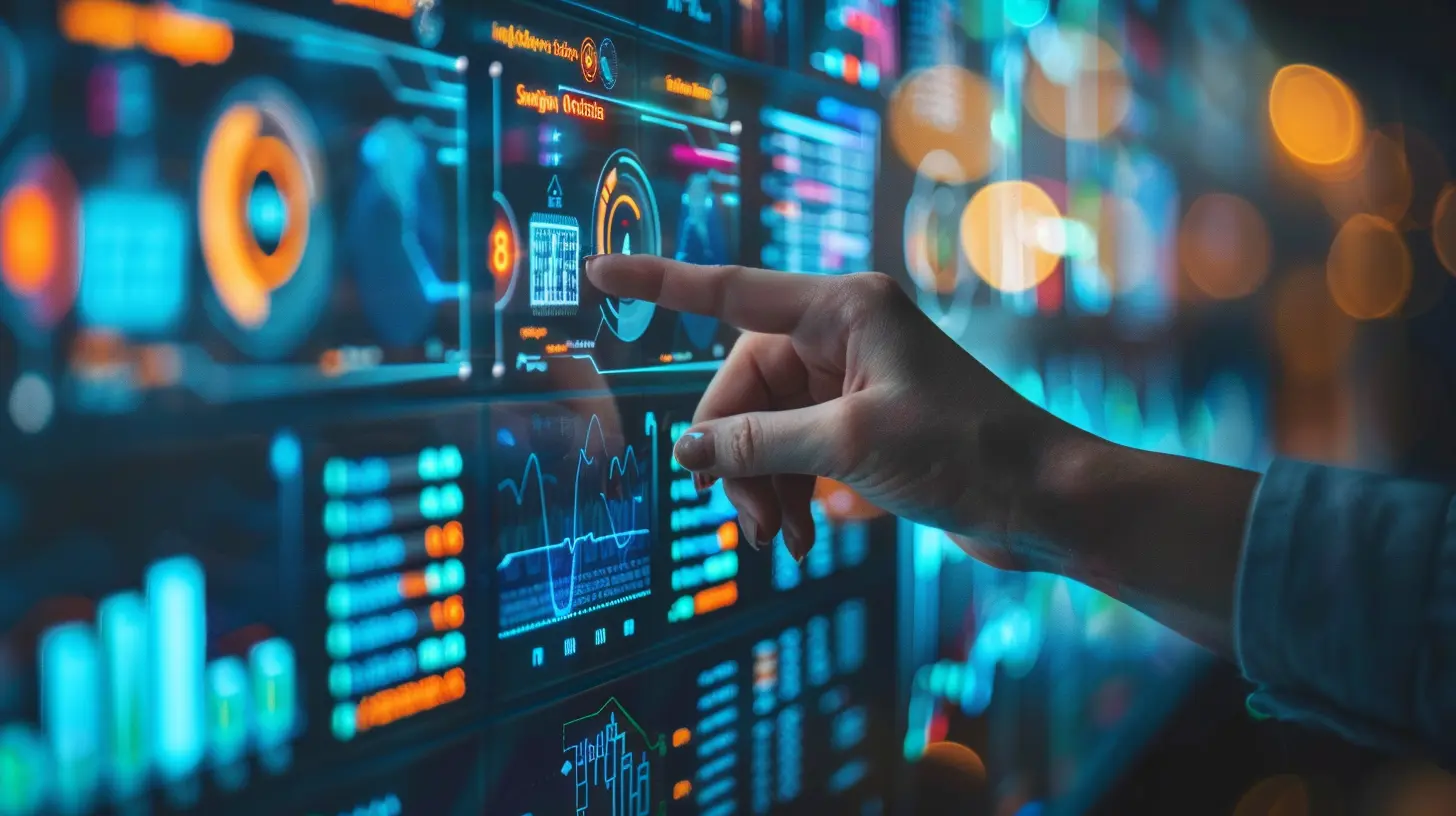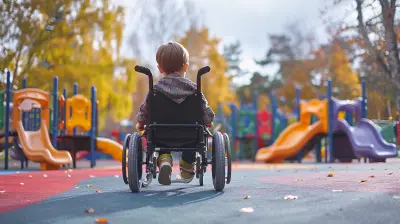Leveraging Big Data to Improve Student Outcomes and Educational Strategies
19 October 2025
Let’s talk about something that sounds like it came straight out of a Silicon Valley pitch meeting — Big Data. Now, before you imagine a robot with thick glasses analyzing spreadsheets and sipping on black coffee, let’s bring it down to Earth. We're going to chat about how Big Data, this scary-sounding tech buzzword, is actually helping students (yes, actual humans) do better in school and helping educators teach smarter, not harder.

So, What is Big Data Anyway?
Let’s not overcomplicate it. Big Data is just a fancy name for all the massive amounts of information we’re generating every second. From your last Google search (yes, even the embarrassing one about how to calculate GPA) to how many times a student logs into an online learning platform, everything creates data. And when you have a lot of this info, guess what? It tells a story.Now, imagine harnessing all that data to help students succeed. Sounds like a superpower, right? Well, welcome to the future of education.

Why Should We Care? (Besides Wanting Students to Pass Algebra)
Teachers, schools, policymakers – everyone wants better outcomes for students. But how do we know what works and what doesn’t? Enter Big Data with a dramatic cape, ready to save the day. By analyzing trends, behaviors, and performance metrics, Big Data helps us figure out what’s working, what’s not, and what needs a total re-think.It’s like having the educational version of Google Maps. Instead of asking, “Why are so many students struggling with math?” and guessing wildly, we can now zoom in, track their journey, and find the roadblocks causing those metaphorical flat tires.

The ABCs of How Big Data is Used in Schools
Let’s break it down nice and easy. Here’s how Big Data is making waves in education:1. Personalized Learning Paths (Like Netflix… but for Homework)
You know how Netflix recommends exactly the kind of TV show you didn't know you needed after a long day? Big Data does the same for learners. By analyzing a student’s strengths, weaknesses, learning speed, and even the time of day they’re most productive, educators can tailor teaching strategies. It's like having a GPS for each student’s brain.No more one-size-fits-all lecture marathons. Instead, lessons can be customized for different learning styles — visual, auditory, kinesthetic, or the rare and elusive “I-only-learn-at-3am-with-coffee” type.
2. Real-Time Feedback (Not Just Red Ink on Tests)
Gone are the days when students had to wait a week to see how badly they flunked (or aced!) that math quiz. With Big Data tools, assessments become interactive and instant. Teachers can get real-time analytics on how students are doing, and adjust their teaching on the fly.Think of it as having a scoreboard during the game, rather than waiting till the end to see who won. Much more useful, right?
3. Predictive Analytics: The Crystal Ball of Education
Ever wish schools could predict when a student is about to fall behind before it happens? Surprise — they kinda can. By tracking things like attendance, participation, test scores, and engagement levels, Big Data can throw up warning signs before things go off the rails.It’s like having a FitBit for learning. If a student’s “educational heart rate” drops too low, the system waves a red flag and lets teachers or administrators step in with extra help or counseling.
4. Spotting Trends and Inequities (Because Everyone Deserves a Chance)
Data doesn’t lie, and it doesn’t play favorites. When collected correctly, Big Data can highlight systemic issues — perhaps certain demographics are consistently underperforming, or certain teaching methods aren’t effective across all classrooms.Rather than relying on gut feelings or outdated assumptions, educators can use hard numbers to push for equitable changes. It's the 21st-century way to call out “Hey, this isn’t fair!” — with bar graphs and pie charts.

Real-World Examples: How Schools Are Crushing It With Big Data
Let’s zoom out from the theory and see it in action. Here’s how the data wizards are working their magic:- Khan Academy uses dashboards that help teachers see which concepts students are struggling with, allowing interventions before frustration sets in.
- Georgia State University tracks over 800 data points per student to improve retention rates. That’s right — 800! They saw a huge boost in graduation rates by targeting students who needed extra support.
- Montgomery County Public Schools in Maryland built a predictive model to identify students at risk of failing as early as elementary school, and then took steps to support them ASAP.
This isn’t sci-fi, my friend. This is happening now.
But Wait… Isn’t That a Lot of Spying?
Okay, let’s talk about the elephant in the virtual classroom. All this data? It has people clutching their privacy settings with nervous fingers. And rightly so.Collecting student data must be done ethically. We're talking transparency, consent, and security. Schools need to make sure they’re not just harvesting info willy-nilly. Parents and students should know what’s being collected and how it benefits them.
Bottom line: Big Data in education should be more “friendly helper robot” and less “evil overlord DJing with your private info.”
Teachers + Tech = Dream Team (With Some Training, Of Course)
Now, if you’re imagining teachers turning into coders overnight, relax. The goal isn’t for every educator to become a data analyst. Instead, software systems do the heavy lifting. Teachers interpret the data and adjust their instruction accordingly.Of course, that means professional development is key. If we hand teachers a data dashboard with more bells and whistles than a spaceship, they’re gonna need some training (and maybe coffee). But once they’re in the groove, the impact is game-changing.
Students Win, Too. Here’s How:
Let’s be real – we’re all about student success stories. From improved grades to increased engagement, here’s what students get out of the Big Data buffet:- Faster Feedback Loops – Know what you messed up on instantly? Yes, please.
- Tailored Content – Learning at your own pace and style feels so 2024.
- Visual Progress Tracking – Nothing like a progress chart to see how far you’ve come.
- Better Support Systems – The system flags trouble before you even realize you’re struggling.
It’s like getting a personal trainer for your brain. And who wouldn’t want that?
The Future Is Bright (And Probably Algorithm-Driven)
So where does all this lead? The future of education is looking collaborative, data-informed, and more student-focused than ever.Imagine smart classrooms that adjust lighting and pace to suit learning moods. Picture AI-driven tutors who never get tired of explaining the same algebra problem 12 different ways. Expect curriculums that evolve in real-time to reflect what helps students succeed — not just what’s in the textbook.
Sure, it’s not The Jetsons quite yet, but Big Data is definitely pushing us closer to a smarter, more empathetic learning environment.
Quick Recap (Because TL;DR is Real)
Let’s hit the rewind button and sum it all up:- Big Data = Loads of info + smart analysis.
- Helps personalize learning like your own Netflix for education.
- Gives real-time snapshots of how students are doing.
- Predicts problems before they become disasters.
- Helps fix systemic inequities.
- Needs to be handled responsibly (no creepy data-snooping vibes please).
- Empowers teachers, students, schools, and policy makers.
- The future of learning just got a major upgrade — and it’s powered by data.
Final Thoughts: Big Data Is the Sidekick Education Didn’t Know It Needed
Let’s be honest — education has always been a bit behind on the tech train. But with Big Data, it’s finally catching up. Not in a cold, robotic kind of way, but in a “Hey, we see you, we understand you, let’s do better together” kind of way.So, next time someone says “Big Data,” don’t roll your eyes. Think of the student who finally passed math because their learning style was understood. Think of the teacher who finally figured out how to reach that quiet kid in the back. Think of classrooms that feel less like factories, and more like launchpads.
Because when done right, Big Data doesn’t just measure education — it transforms it.
all images in this post were generated using AI tools
Category:
Educational TechnologyAuthor:

Anita Harmon
Discussion
rate this article
1 comments
Darby Phillips
Big data insights can significantly enhance educational strategies and improve student outcomes effectively.
October 25, 2025 at 2:20 AM

Anita Harmon
Absolutely! Big data provides valuable insights that can tailor educational strategies to meet diverse student needs, ultimately driving better outcomes.


